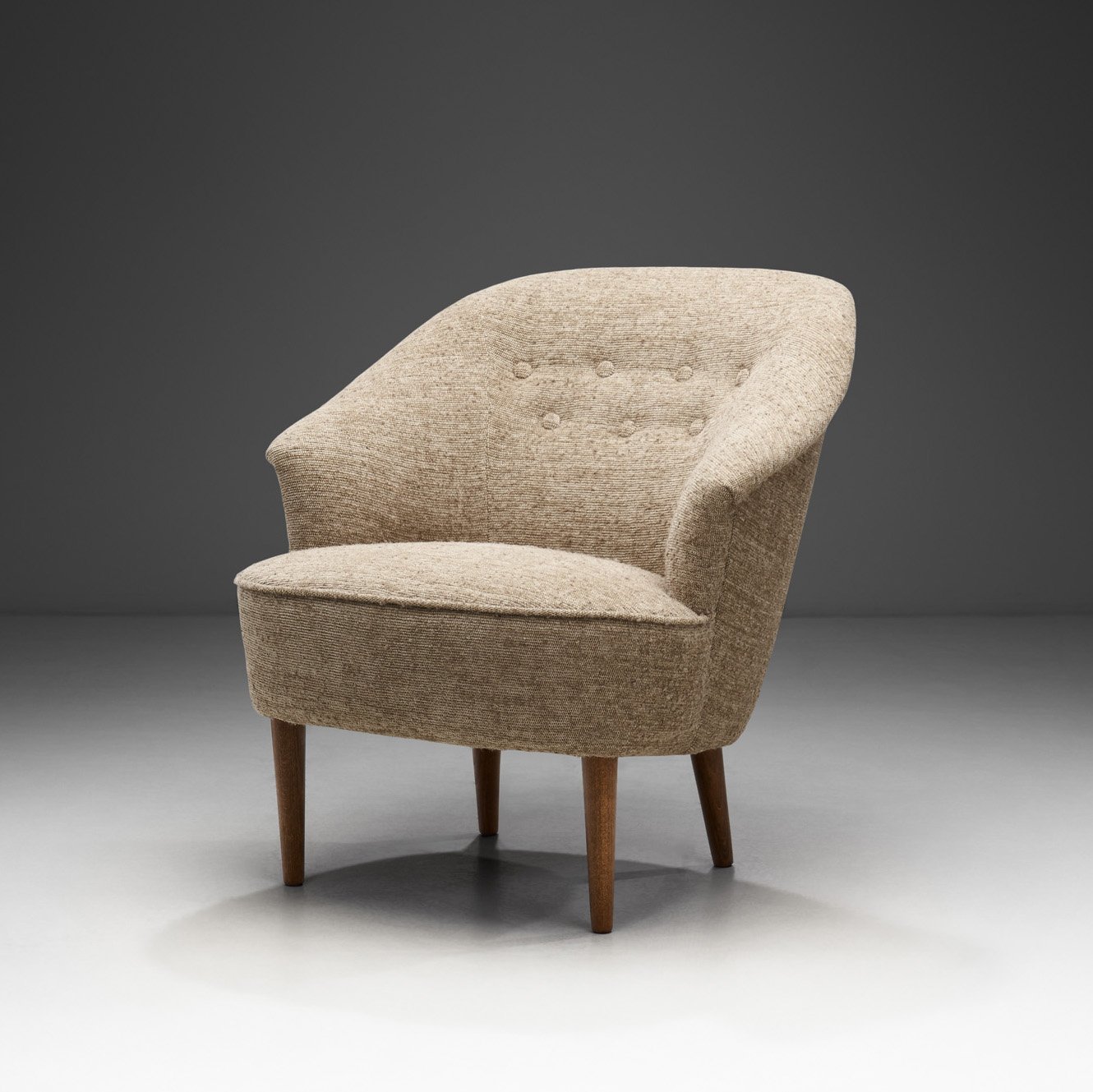Floating Easy Chair in Sheepskin by Otto Schulz (attr.), Sweden 1940s (sold)


















Floating Easy Chair in Sheepskin by Otto Schulz (attr.), Sweden 1940s (sold)
This distinct mid-century easy chair features multiple special characteristics, from its floating back to the curvaceous armrests. This model is, without a doubt, the work of a master cabinetmaker.
The elegant organic lines of the design create a striking silhouette. Its generous proportions and luxurious upholstery create a visually pleasing look and provide great sitting comfort. The chair’s seat and backrest are separated in a style that is typical of Swedish designer, Otto Schulz. This stylish feature highlights the beautiful oaken frame and show off the cabinetmaker’s expert craftsmanship. The armrests are in an unusual shape, curving outwards, and along with the generous proportions and upholstery, are perfectly sculpted to accommodate the sitter. Schulz was known for his floating back designs as it is seen here, preventing the design from looking heavy. The sheepskin makes this feature even more outstanding, as it embraces the solid structure with its softness. The sturdy frame and armrests are carved from solid oak and have acquired a beautiful patina over the decades.
In a true Swedish modern way, this easy chair flaunts premium materials and expert craftsmanship in a modern style that honours its materials and their users. With plenty of visually arresting qualities, this model is a timeless and rare find.
SOLD
Condition:
In good vintage condition. Wear consistent with age and use. Minor scratches and marks on the wood. The chair has been reupholstered recently in premium sheepskin.
Dimensions:
27.95 in W x 28.74 in D x 31.88 in H; Seat height 17.71 in
71 cm W x 73 cm D x 81 cm H; Seat height 45 cm
About the attributed designer:
Otto Schulz (1882-1970) was a Swedish interior designer, furniture designer, publisher and founder of the furniture company BOET in Gothenburg.
Schulz was born in Germany and moved to Sweden in 1907. He mainly produced opulent upholstered furniture, as well as lavishly inlaid, decorative box furniture style-wise between functionalism and traditionalism. He has some of his own invented techniques patented, including the use of decorative nails as part of the design, called Bopoint. After establishing his own furniture company, BOET, he used it as a showroom to exhibit his designs as well.
In the 1920s, he started publishing the eponymous magazine BOET, which was also a platform for his own collection. The magazine was at the time the most influential, appearing in regular editions in Sweden and often included interviews with well-known designers and architects. ~H.












